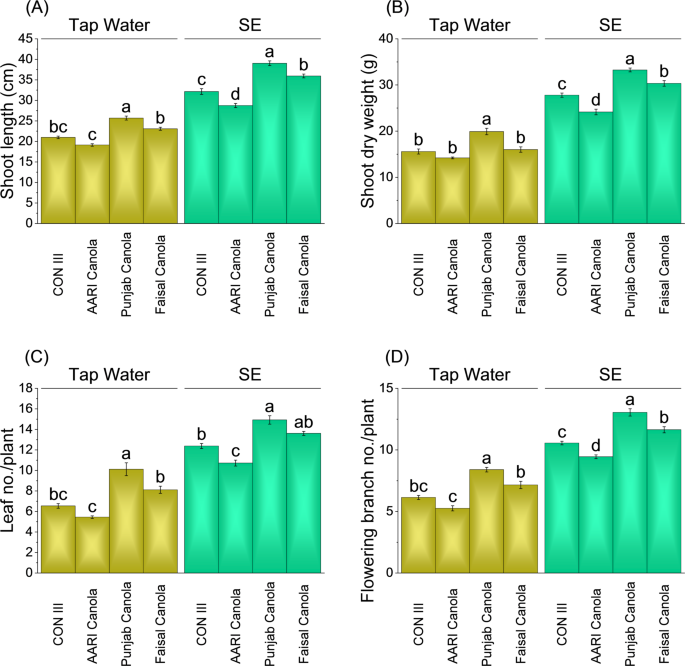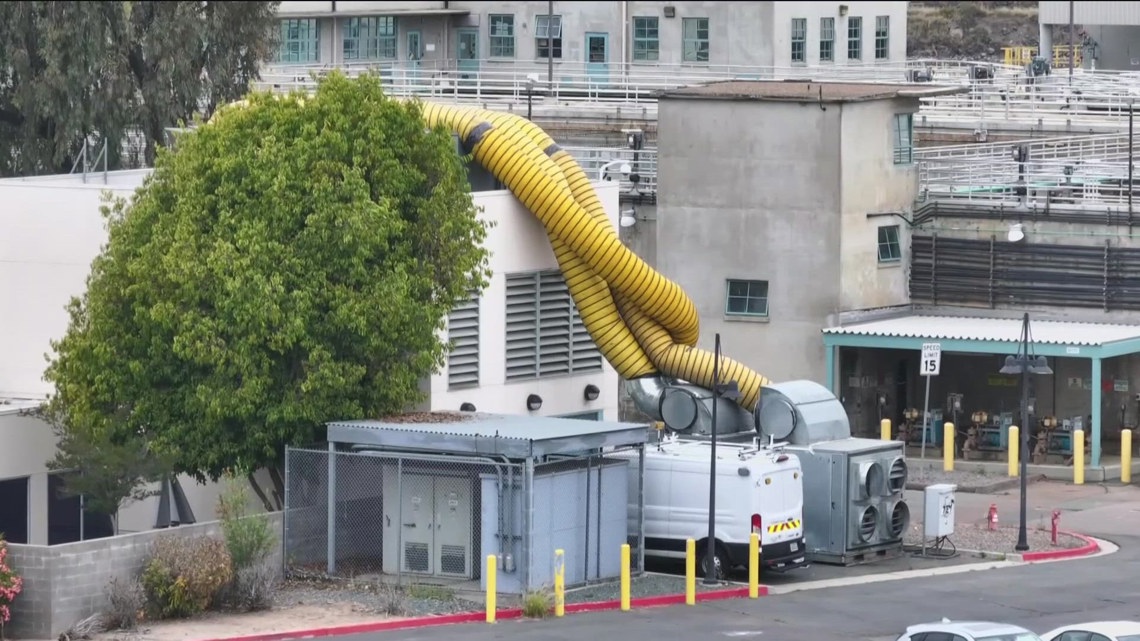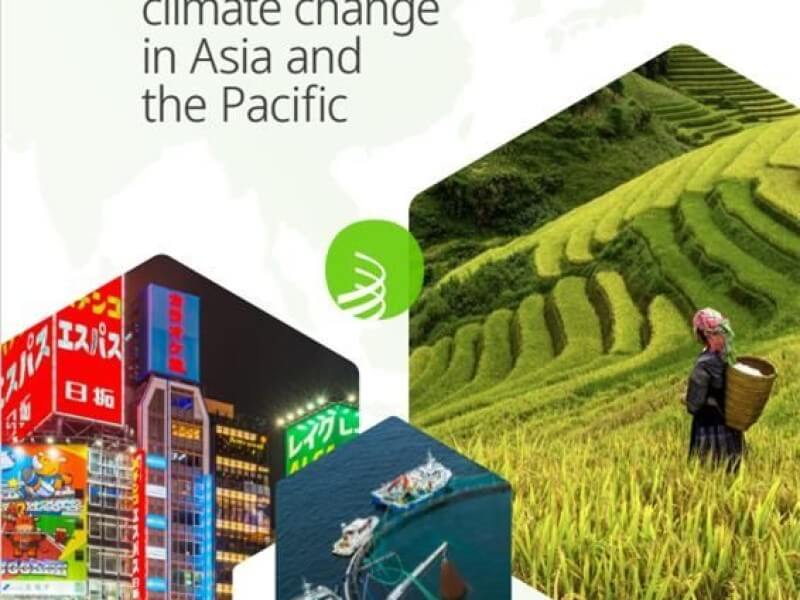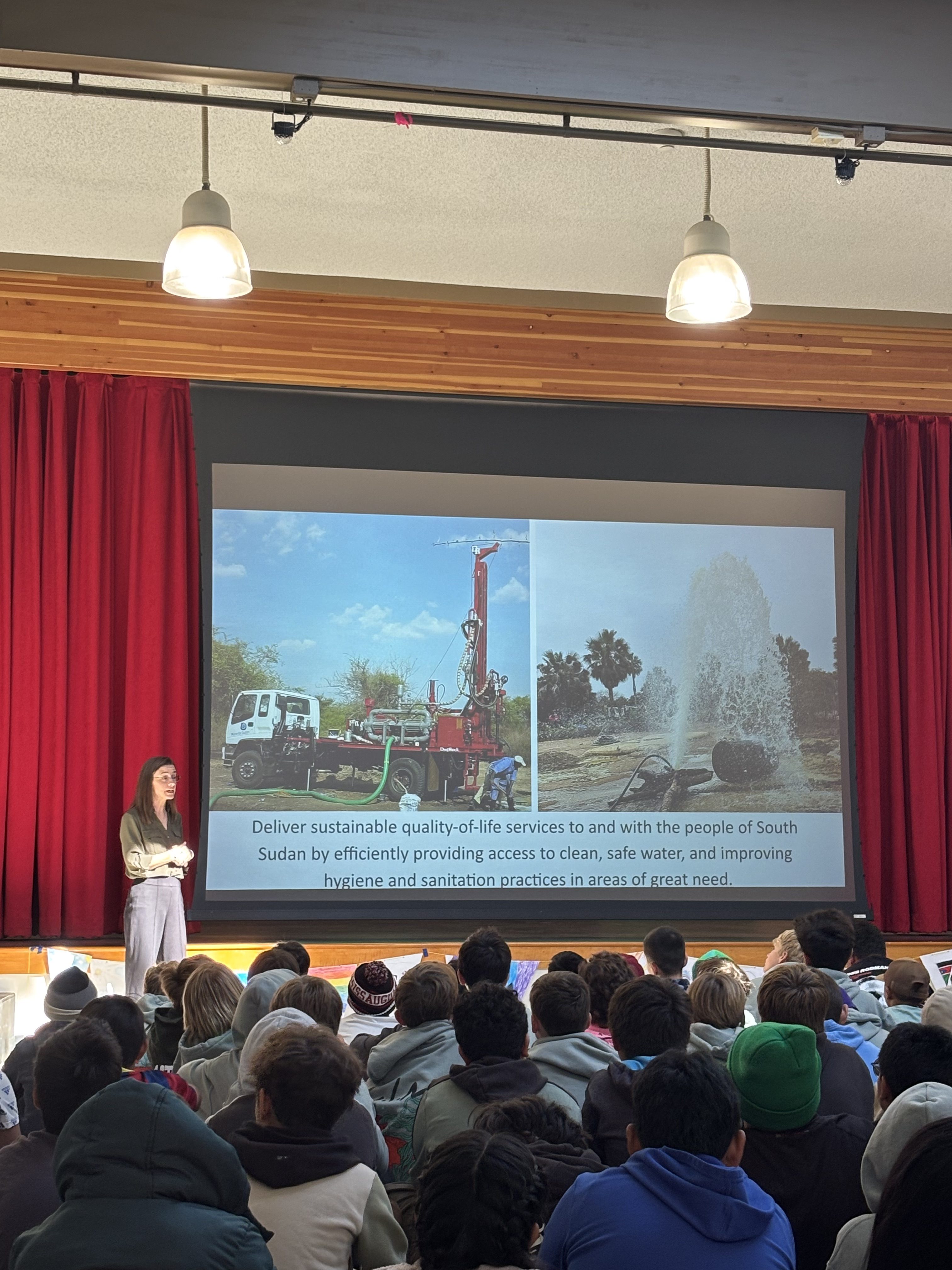Report on the Optimization of Canola Cultivation Using Diluted Sewage Effluent
Executive Summary and Alignment with Sustainable Development Goals (SDGs)
This report details an investigation into the use of diluted sewage effluent (SE) as a sustainable irrigation source for canola (Brassica napus L.) cultivation. The study addresses critical challenges related to water scarcity, food security, and environmental sustainability, directly contributing to several United Nations Sustainable Development Goals (SDGs). By evaluating SE as a nutrient-rich alternative to freshwater, this research provides a viable pathway towards achieving:
- SDG 6 (Clean Water and Sanitation): Promoting the safe reuse of treated wastewater to alleviate pressure on freshwater resources.
- SDG 2 (Zero Hunger): Enhancing crop productivity and soil fertility to support sustainable agriculture and improve food security.
- SDG 12 (Responsible Consumption and Production): Demonstrating a circular economy model where wastewater is repurposed as a valuable resource, reducing the need for synthetic fertilizers.
The findings indicate that 60% diluted SE significantly enhances the growth, yield, and biochemical health of canola, with the Punjab Canola variety showing exceptional performance. This approach presents a cost-effective and environmentally responsible strategy for agriculture, particularly in water-stressed regions like Pakistan.
1. Introduction: Addressing Water Scarcity and Soil Degradation through Sustainable Practices
1.1. The Challenge: Water Stress and Agricultural Demands (SDG 6)
Pakistan is facing a severe water crisis, with per-capita water availability plummeting to critical levels. This scarcity forces agricultural producers to use untreated wastewater, posing significant risks to environmental health, food safety, and public well-being. Contaminants such as heavy metals and pathogens in raw sewage can degrade soil quality and enter the food chain, undermining efforts related to SDG 3 (Good Health and Well-being) and SDG 15 (Life on Land). Effective wastewater management is therefore essential for sustainable development.
1.2. A Sustainable Solution: Wastewater as a Resource (SDG 2 & SDG 12)
Sewage effluent, when properly managed, is a valuable resource rich in macronutrients (Nitrogen, Phosphorus, Potassium) essential for plant growth. Its use can improve soil fertility, particularly in regions like Pakistan where soils are often nutrient-deficient and low in organic matter. This aligns with the principles of SDG 2 by promoting sustainable agricultural intensification and SDG 12 by recycling nutrients and reducing dependence on costly chemical fertilizers.
2. Methodology: Evaluating Canola Performance Under Sewage Effluent Irrigation
2.1. Experimental Design
A controlled pot experiment was conducted to assess the impact of 60% diluted SE on four canola varieties (CON III, AARI Canola, Punjab Canola, and Faisal Canola) compared to a tap water control. The experiment followed a completely randomized design with four replications.
2.2. Key Parameters Measured
The study evaluated a comprehensive set of indicators to measure plant health and productivity:
- Morphological Attributes: Shoot length, dry weight, leaf count, and flowering branches.
- Yield Components: Number of siliques per plant, seed yield, and seed oil content.
- Physiological Health: Photosynthetic pigments (chlorophyll a, b, total chlorophyll) and carotenoids.
- Biochemical Stress Markers: Proline, ascorbic acid, hydrogen peroxide (H₂O₂), and malondialdehyde (MDA).
- Nutrient Uptake: Concentrations of Nitrogen (N), Phosphorus (P), and Potassium (K) in shoots and roots.
3. Key Findings: Contributions to Sustainable Agricultural Productivity
3.1. Enhanced Crop Growth and Yield (Contribution to SDG 2: Zero Hunger)
Irrigation with diluted SE led to significant improvements in all tested canola varieties. The Punjab Canola variety demonstrated the most robust response, highlighting its suitability for cultivation under these conditions.
- Shoot Length: Increased by 51.99%
- Shoot Dry Weight: Increased by 66.96%
- Leaf Number Per Plant: Increased by 47.55%
- Flowering Branches Per Plant: Increased by 55.34%
- Seed Oil Content: Increased by 9.87%
These enhancements in biomass and oil content directly support the goal of increasing food production and promoting resilient agricultural practices.
3.2. Improved Plant Health and Nutrient Efficiency (Contribution to SDG 12 & SDG 15)
The application of SE not only boosted growth but also improved the physiological and biochemical status of the plants, indicating reduced environmental stress and more efficient resource use.
- Enhanced Photosynthesis: Punjab Canola showed marked increases in chlorophyll a (59.80%), chlorophyll b (39.28%), and total chlorophyll (56.38%), signifying improved photosynthetic capacity.
- Increased Nutrient Uptake: All varieties showed higher concentrations of N, P, and K in roots and shoots, demonstrating that SE acts as an effective bio-fertilizer. This reduces the need for synthetic inputs, aligning with responsible production patterns (SDG 12).
- Reduced Oxidative Stress: Levels of stress indicators such as proline, H₂O₂, and MDA were significantly lower in SE-treated plants. This suggests that the nutrient-rich water created a healthier growing environment, contributing to sustainable land use (SDG 15).
4. Conclusion and Recommendations for Sustainable Agriculture
This study confirms that the use of 60% diluted sewage effluent is a highly effective and sustainable strategy for irrigating canola. It simultaneously addresses water scarcity (SDG 6), enhances food production (SDG 2), and promotes a circular economy by recycling valuable nutrients (SDG 12). The superior performance of the Punjab Canola variety suggests that crop selection is a key factor for optimizing this practice.
Recommendations for Future Action
- Conduct long-term field trials to validate these findings and assess the cumulative impact on soil health, including potential heavy metal accumulation.
- Develop and promote guidelines for the safe dilution and application of sewage effluent to minimize health and environmental risks.
- Integrate wastewater reuse into national agricultural and water management policies to scale up these sustainable practices.
Analysis of Sustainable Development Goals (SDGs) in the Article
1. Which SDGs are addressed or connected to the issues highlighted in the article?
The article addresses and connects to several Sustainable Development Goals (SDGs) by exploring the use of sewage effluent as a sustainable resource for agriculture in a water-scarce region. The primary SDGs identified are:
- SDG 2: Zero Hunger: The research directly contributes to improving agricultural productivity and promoting sustainable agricultural practices.
- SDG 6: Clean Water and Sanitation: The core theme of the article is water scarcity and the management and reuse of wastewater.
- SDG 3: Good Health and Well-being: The article acknowledges and addresses the health risks associated with using contaminated wastewater in agriculture.
- SDG 12: Responsible Consumption and Production: It promotes the efficient use of natural resources by treating wastewater as a valuable resource rather than waste.
- SDG 15: Life on Land: The study touches upon improving soil health and fertility, which is crucial for combating land degradation.
2. What specific targets under those SDGs can be identified based on the article’s content?
Based on the article’s focus, the following specific SDG targets can be identified:
-
SDG 2: Zero Hunger
- Target 2.4: “By 2030, ensure sustainable food production systems and implement resilient agricultural practices that increase productivity and production… and that progressively improve land and soil quality.”
Explanation: The study investigates how using diluted sewage effluent (SE) can significantly increase the productivity and yield of canola, an important oilseed crop. The article states that SE is “rich in macronutrients such as nitrogen (N), phosphorus (P), and potassium (K), which enhance soil fertility and crop productivity.” This directly aligns with creating a sustainable system that improves production and soil quality.
- Target 2.4: “By 2030, ensure sustainable food production systems and implement resilient agricultural practices that increase productivity and production… and that progressively improve land and soil quality.”
-
SDG 6: Clean Water and Sanitation
- Target 6.3: “By 2030, improve water quality by reducing pollution… halving the proportion of untreated wastewater and substantially increasing recycling and safe reuse globally.”
Explanation: The entire premise of the research is the reuse of sewage effluent for irrigation. The article explicitly discusses the risks of “untreated sewage water” and proposes “effective management strategies such as filtration, dilution, and biological treatment” to enable its safe reuse in agriculture. The experiment itself uses a 60% dilution as a management strategy. - Target 6.4: “By 2030, substantially increase water-use efficiency across all sectors and ensure sustainable withdrawals and supply of freshwater to address water scarcity…”
Explanation: The introduction highlights the severe water scarcity in Pakistan, noting that “per-capita water availability has declined from nearly 5,000 m³ in 1951 to around 1,100 m³ in 2005.” By proposing SE as a “sustainable water resource” and an “alternative to conventional irrigation,” the study directly addresses the need to reduce reliance on freshwater and increase overall water-use efficiency in the agricultural sector.
- Target 6.3: “By 2030, improve water quality by reducing pollution… halving the proportion of untreated wastewater and substantially increasing recycling and safe reuse globally.”
-
SDG 3: Good Health and Well-being
- Target 3.9: “By 2030, substantially reduce the number of deaths and illnesses from hazardous chemicals and air, water and soil pollution and contamination.”
Explanation: The article warns that untreated wastewater “poses serious environmental and health concerns,” including “heavy metal accumulation, and health risks for plants, animals, and humans.” It specifically mentions that “cadmium (Cd) levels exceeded permissible limits in effluents, soils, and edible vegetable parts, highlighting its potential threat to food safety and human health.” The study’s focus on optimizing dilution aims to mitigate these risks.
- Target 3.9: “By 2030, substantially reduce the number of deaths and illnesses from hazardous chemicals and air, water and soil pollution and contamination.”
-
SDG 12: Responsible Consumption and Production
- Target 12.2: “By 2030, achieve the sustainable management and efficient use of natural resources.”
Explanation: The research promotes a circular economy approach by framing sewage effluent not as waste but as a resource containing valuable water and nutrients (N, P, K). This represents a more efficient use of natural resources, reducing the need for both freshwater and synthetic chemical fertilizers, which are described as having “high cost and scarcity.”
- Target 12.2: “By 2030, achieve the sustainable management and efficient use of natural resources.”
-
SDG 15: Life on Land
- Target 15.3: “By 2030, combat desertification, restore degraded land and soil… and strive to achieve a land degradation-neutral world.”
Explanation: The article states that “Soils in Pakistan generally exhibit low natural fertility,” with widespread deficiencies in nitrogen, phosphorus, and critically low organic matter. By using nutrient-rich SE, the practice contributes to improving soil fertility and health, which is a key component of restoring degraded land.
- Target 15.3: “By 2030, combat desertification, restore degraded land and soil… and strive to achieve a land degradation-neutral world.”
3. Are there any indicators mentioned or implied in the article that can be used to measure progress towards the identified targets?
Yes, the article mentions and implies several quantitative and qualitative indicators that can be used to measure progress:
- Indicators for Agricultural Productivity (Target 2.4): The study provides direct, measurable indicators of crop performance.
- Percentage increase in shoot length (e.g., 51.99% in Punjab Canola).
- Percentage increase in shoot dry weight (e.g., 66.96%).
- Increase in leaf number per plant and flowering branches.
- Increase in seed yield per plant and seed oil content (e.g., 9.87%).
- Concentrations of N, P, and K in plant roots and shoots.
- Indicators for Water Scarcity and Reuse (Targets 6.3 & 6.4):
- Per-capita water availability (m³/year), with data cited for Pakistan showing a sharp decline.
- The proportion of wastewater being reused (the study models this practice).
- Concentrations of heavy metals (Cd, Fe) and other pollutants in sewage effluent (as shown in Table 2) to assess its quality before and after treatment/dilution.
- Indicators for Health and Pollution (Target 3.9):
- Levels of heavy metals (e.g., Cadmium) in soil and edible parts of crops, measured against permissible limits. The article explicitly mentions this as a critical concern.
- Indicators for Soil Health (Target 15.3):
- Levels of essential nutrients (Nitrogen, Phosphorus, Potassium) in the soil.
- Soil organic matter content (the article cites an average of 0.5% in Pakistan as critically low).
4. Summary Table of SDGs, Targets, and Indicators
| SDGs | Targets | Indicators |
|---|---|---|
| SDG 2: Zero Hunger | 2.4: Ensure sustainable food production systems and improve land and soil quality. |
|
| SDG 6: Clean Water and Sanitation | 6.3: Improve water quality and increase safe wastewater reuse.
6.4: Increase water-use efficiency and address water scarcity. |
|
| SDG 3: Good Health and Well-being | 3.9: Reduce illnesses from water and soil pollution. |
|
| SDG 12: Responsible Consumption and Production | 12.2: Achieve sustainable management and efficient use of natural resources. |
|
| SDG 15: Life on Land | 15.3: Combat land degradation and restore degraded soil. |
|
Source: nature.com







